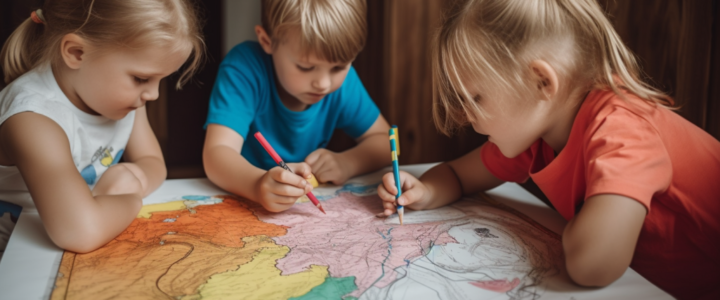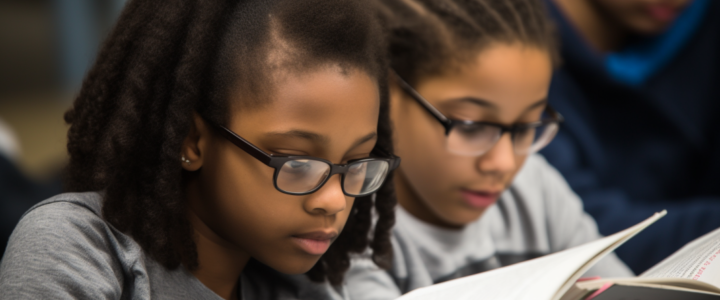Childhood obesity has become a growing concern worldwide. Defined as an excess of body fat in children and adolescents, it poses serious health risks and requires urgent attention. Addressing this issue is crucial to ensure the well-being and future of our younger generation. In this article, we will explore the causes of childhood obesity, the associated health risks, and discuss various strategies to combat this prevalent problem.
Causes of Childhood Obesity
There are several factors contributing to the rise of childhood obesity. A sedentary lifestyle, characterized by prolonged periods of inactivity such as excessive screen time and lack of physical exercise, is one of the leading causes. Coupled with this, unhealthy dietary habits, including the consumption of high-calorie, sugary foods and beverages, contribute to weight gain in children. Additionally, genetic factors and environmental influences, such as the availability of fast food and unhealthy food marketing, play significant roles in the development of obesity among children.
Health Risks Associated with Childhood Obesity
Childhood obesity has far-reaching consequences on a child’s health. It increases the risk of developing serious conditions such as type 2 diabetes, heart disease, high blood pressure, and joint problems. These health issues can persist into adulthood and significantly impact an individual’s quality of life. Therefore, it is crucial to address childhood obesity at an early stage to prevent the onset of these chronic diseases.
The Role of Parents in Preventing Childhood Obesity
Parents play a pivotal role in preventing childhood obesity. By encouraging physical activity and limiting sedentary behaviors, such as excessive television watching or video game playing, parents can instill healthy habits in their children. Additionally, promoting healthy eating habits, such as consuming fruits, vegetables, and whole grains while limiting sugary snacks and beverages, is essential. Parents should serve as role models by adopting these habits themselves and creating a supportive home environment.
The Role of Schools in Combating Childhood Obesity
Schools have a unique opportunity to contribute to the fight against childhood obesity. By implementing comprehensive physical education programs, schools can promote regular exercise and educate children about the importance of an active lifestyle. Moreover, offering nutritious meals and snacks in school cafeterias can help children make healthier food choices. Creating a supportive environment
where healthy choices are encouraged and celebrated can have a significant impact on students’ overall well-being.
Government Initiatives and Policies
To tackle the issue of childhood obesity, governments have implemented various initiatives and policies. One crucial step is regulating food marketing targeted at children, particularly for unhealthy products. By restricting the advertising of sugary snacks and beverages, governments can reduce the influence of marketing on children’s food choices. Furthermore, improving school lunch programs to provide nutritious and balanced meals is essential. By partnering with local farms and suppliers, schools can offer fresh, wholesome options to students.
Additionally, government funding plays a vital role in supporting community programs aimed at promoting physical activity and healthy eating. By investing in recreational facilities, community gardens, and educational campaigns, governments can create an environment that fosters healthy behaviors and helps children maintain a healthy weight.
Click here for more.
The Importance of Community Involvement
Addressing childhood obesity requires a collective effort involving not only parents and schools but also the broader community. Creating awareness campaigns about the risks of childhood obesity and the benefits of a healthy lifestyle can empower families to make positive changes. Communities can provide resources such as cooking classes, nutrition workshops, and support groups to help families adopt healthier habits.
Furthermore, establishing safe spaces for physical activity, such as parks, playgrounds, and walking trails, encourages children to engage in active play. By creating a community that values and supports healthy living, the fight against childhood obesity becomes a shared responsibility.
Strategies for Managing Childhood Obesity
Managing childhood obesity involves a multifaceted approach. Behavioral interventions, such as setting realistic goals, creating structured meal times, and monitoring portion sizes, can help children develop healthier habits. Nutritional counseling can provide families with the knowledge and guidance necessary to make informed food choices and establish balanced meal plans. Encouraging regular physical activity, whether through organized sports, outdoor play, or family activities, is crucial for maintaining a healthy weight and overall well-being.
Overcoming Challenges in Addressing Childhood Obesity
Addressing childhood obesity is not without its challenges. Cultural influences, including traditional foods and customs, can sometimes hinder efforts to adopt healthier lifestyles. It is important to respect and incorporate cultural diversity while promoting nutritious choices. Socioeconomic factors can also play a role, as limited access to affordable, healthy food options can make it difficult for some families to make positive changes. Collaborative efforts between governments, communities, and organizations are necessary to ensure that all children have equal opportunities to maintain a healthy weight.
The Long-Term Impact of Addressing Childhood Obesity
Addressing childhood obesity has numerous long-term benefits. By promoting healthy habits from an early age, we can set children on a path to a lifetime of well-being. Improved overall health, reduced healthcare costs, and enhanced quality of life are just some of the positive outcomes that can be achieved. Furthermore, by investing in the health of our children, we are investing in the future of our society, fostering a generation that is physically active, mentally resilient, and poised for success.
Conclusion
Childhood obesity is a pressing issue that requires immediate attention. By understanding the causes, risks, and implications associated with this problem, we can implement effective strategies to combat it. By empowering parents, schools, governments, and communities to work together, we can create an environment that supports and promotes healthy habits in children. Let us join forces to fight childhood obesity and secure a healthier future for our children.
FAQs
- Q: How prevalent is childhood obesity? A: Childhood obesity rates have been steadily increasing worldwide, with the World Health Organization (WHO) estimating that over 340 million children and adolescents aged 5-19 were overweight or obese in 2016.
- Q: What are some practical ways parents can promote physical activity in children? A: Parents can encourage physical activity in children by involving them in sports or outdoor activities, organizing family walks or bike rides, limiting screen time, and providing opportunities for active play.
- Q: Are there any specific dietary guidelines to follow for preventing childhood obesity? A: While individual dietary needs may vary, it is generally recommended to include a variety of fruits, vegetables, whole grains, and lean proteins in children’s diets. Limiting sugary snacks, beverages, and processed foods can also be beneficial.
- Q: Can genetics alone cause childhood obesity? A: While genetics can contribute to a child’s predisposition to gaining weight, it is not the sole determinant. Environmental factors, such as diet and physical activity levels, also play a significant role.
- Q: How can schools create a supportive environment for combating childhood obesity? A: Schools can implement policies that prioritize physical education, provide nutritious meals and snacks, promote health education, and create a culture that encourages and celebrates healthy lifestyles.
- Q: What is the importance of early intervention in addressing childhood obesity? A: Early intervention is crucial because habits formed in childhood often persist into adulthood. By addressing obesity early, there is a greater chance of preventing long-term health complications.
Remember that addressing childhood obesity requires a comprehensive and collaborative approach. By empowering parents, schools, governments, and communities, we can make a significant impact in the fight against this epidemic. Together, let’s prioritize the health and well-being of our children and create a brighter, healthier future for generations to come.









